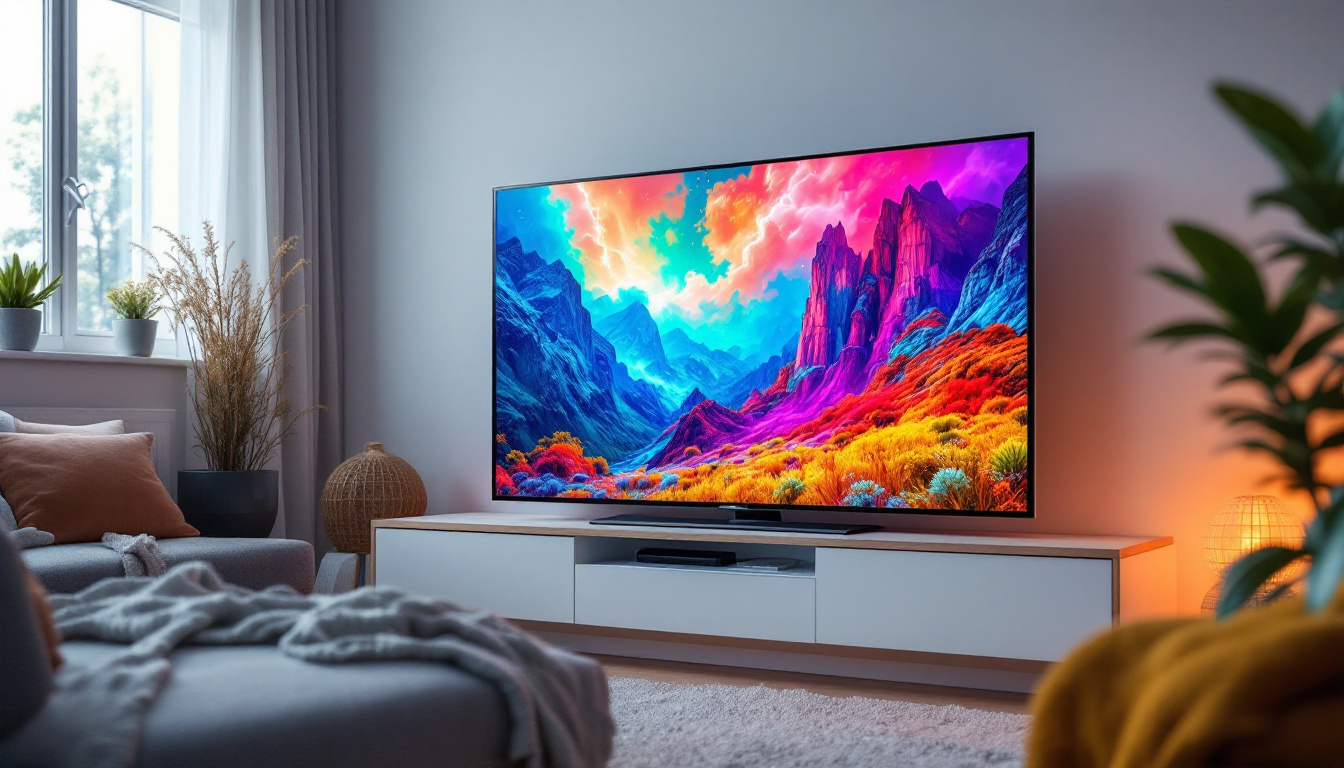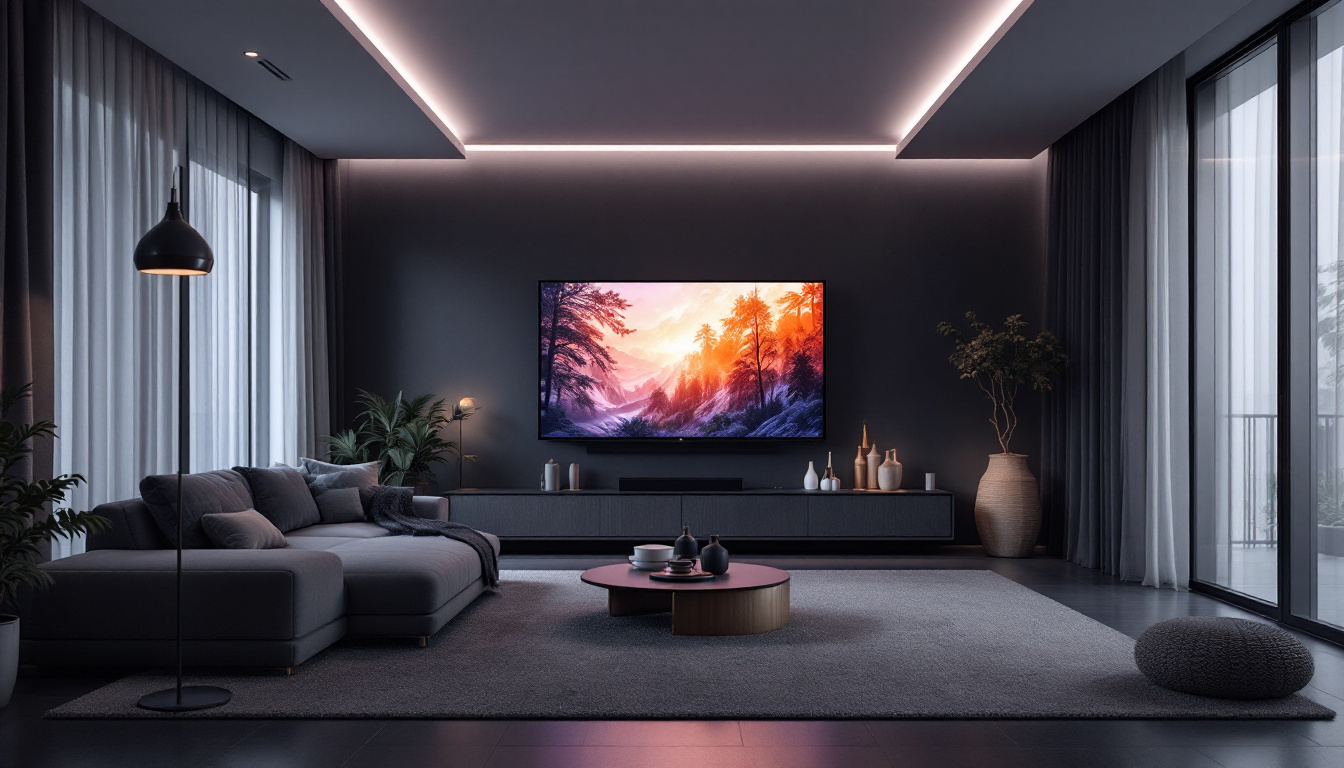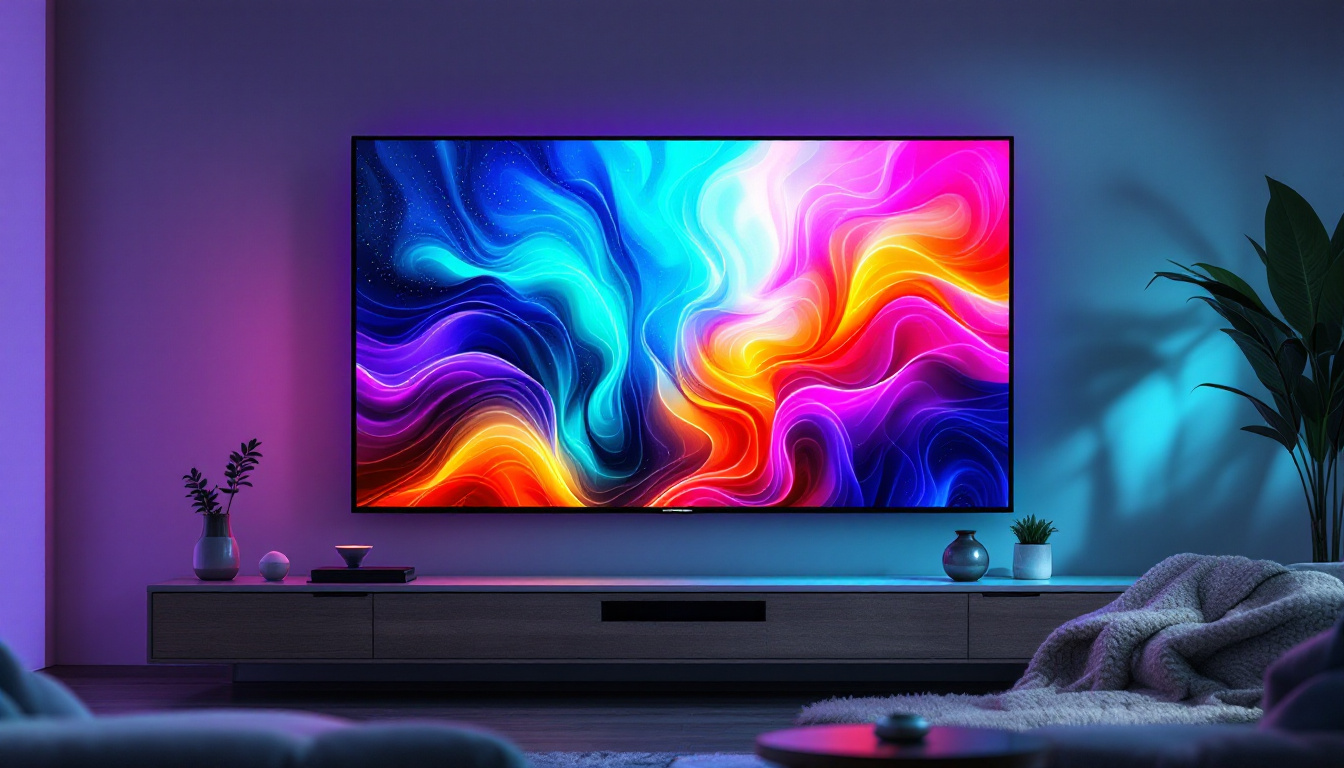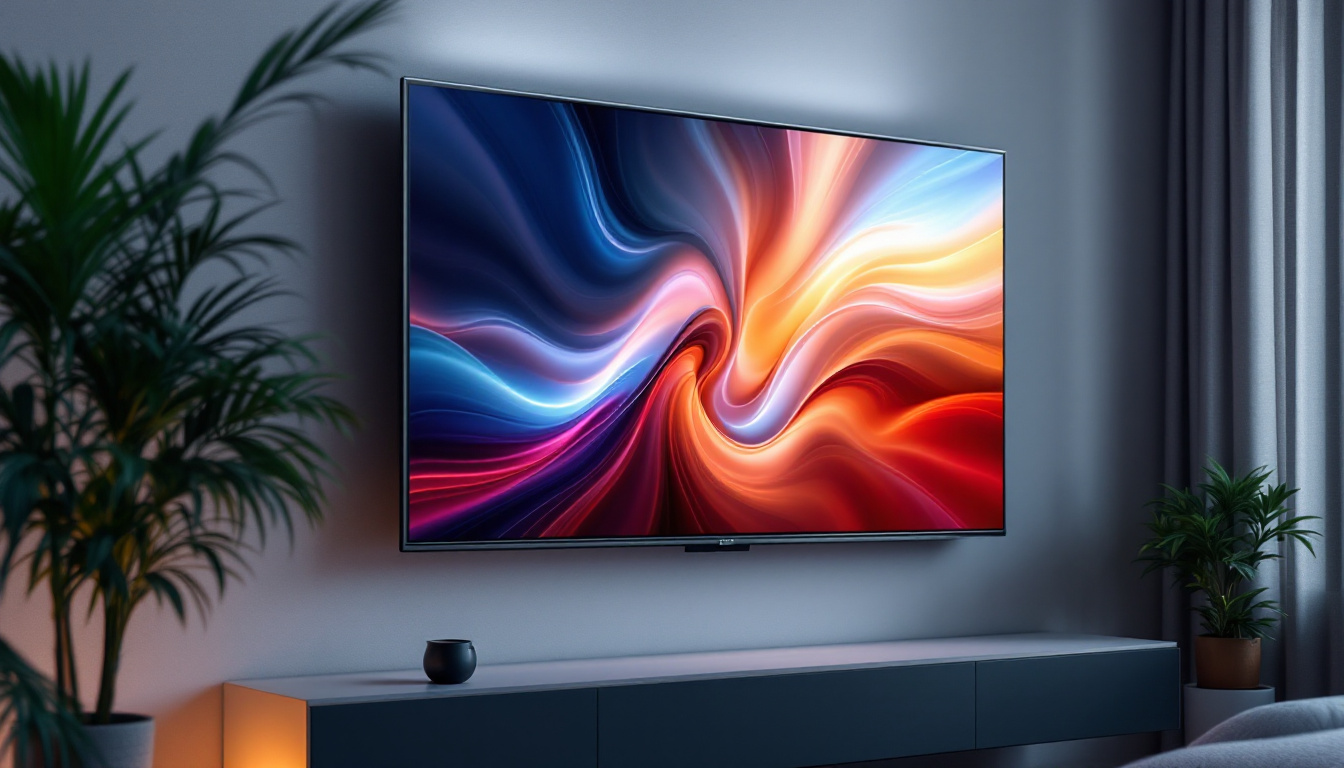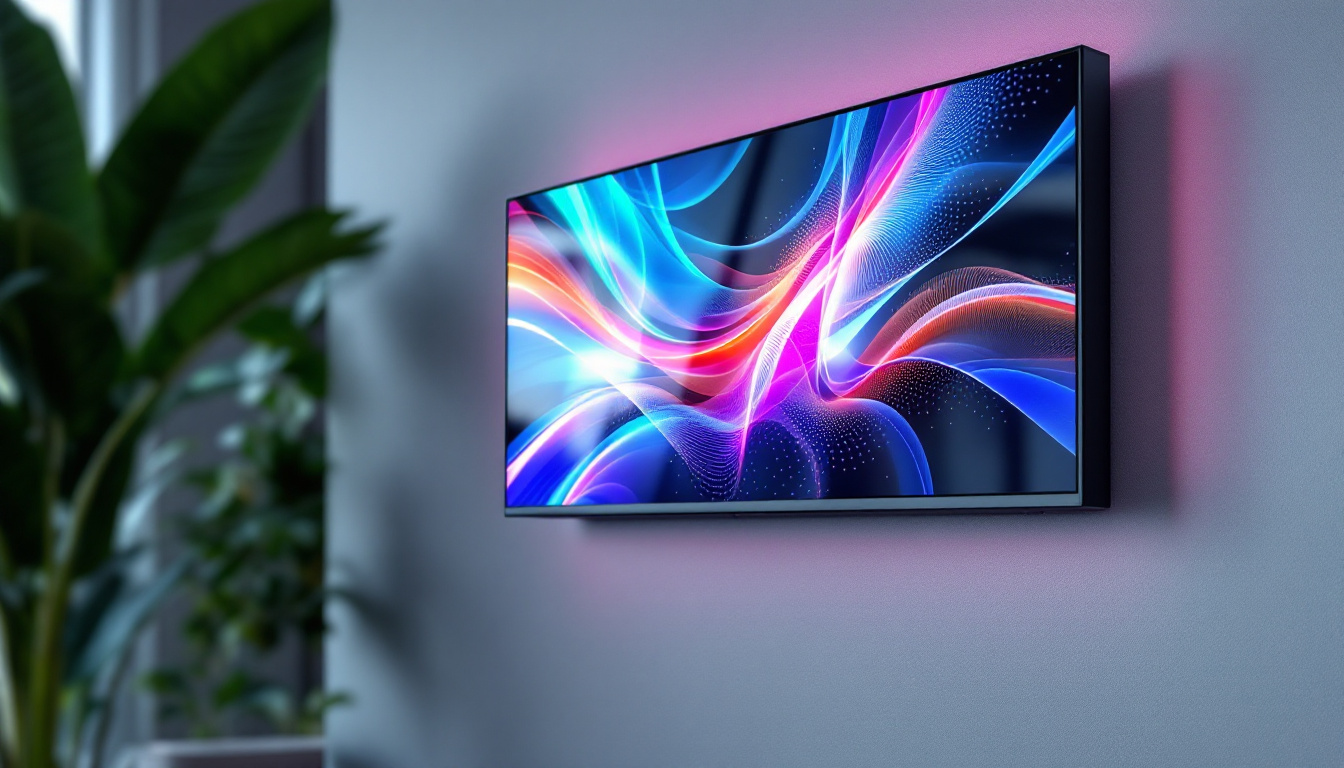Lcd Monitor: LED Display Explained
In the realm of modern technology, the terms LCD and LED are often used interchangeably, leading to confusion among consumers. Understanding the differences and similarities between these two types of displays is essential for making informed purchasing decisions. This article delves into the intricacies of LCD monitors and LED displays, providing clarity and insight into their functionalities, advantages, and applications.
Understanding LCD Technology
Liquid Crystal Display (LCD) technology has revolutionized the way visuals are presented on screens. Initially developed in the 20th century, LCDs have become ubiquitous in televisions, computer monitors, and portable devices. The core principle behind LCD technology involves the manipulation of liquid crystals to control light passage, resulting in vibrant images.
How LCD Works
At the heart of an LCD monitor lies a layer of liquid crystals sandwiched between two polarizing filters. When an electric current is applied, these crystals align in such a way that they either block or allow light to pass through. This process creates the images on the screen. However, LCDs require a backlight to illuminate the display since the liquid crystals themselves do not emit light.
The most common backlighting method for LCDs involves the use of cold cathode fluorescent lamps (CCFLs), although newer models often utilize LED backlighting for improved efficiency and brightness. The combination of liquid crystals and backlighting allows for a wide range of colors and sharp images, making LCDs a popular choice for various applications. Furthermore, advancements in technology have led to the development of various types of LCDs, including Twisted Nematic (TN), In-Plane Switching (IPS), and Vertical Alignment (VA) panels, each offering distinct advantages in terms of color accuracy, viewing angles, and response times.
Advantages of LCD Monitors
LCD monitors offer several advantages that contribute to their widespread use. Firstly, they are generally lighter and thinner than traditional cathode ray tube (CRT) monitors, making them more portable and easier to mount. Additionally, LCDs consume less power, which is an essential consideration for energy-conscious consumers and businesses alike.
Moreover, LCD technology provides excellent image quality, with high resolutions available for both casual and professional use. The ability to display sharp images with minimal distortion enhances the viewing experience, whether for gaming, graphic design, or everyday tasks. Another significant advantage is the reduced eye strain compared to older display technologies, as LCDs often feature flicker-free technology and blue light filters, catering to users who spend long hours in front of screens. This focus on user comfort has made LCDs a preferred choice not only for home entertainment but also in educational and corporate environments, where prolonged use is common.
Exploring LED Technology
Light Emitting Diode (LED) technology has emerged as a significant advancement in display technology, often touted for its energy efficiency and superior image quality. While LED displays are technically a form of LCD, they differ primarily in their backlighting method, which has profound implications for performance and visual output.
How LED Displays Work
LED displays utilize the same liquid crystal technology as traditional LCDs, but instead of CCFLs, they employ light-emitting diodes as their backlight source. This shift allows for greater control over brightness and contrast, resulting in more vivid colors and deeper blacks. The use of LED backlighting also enables thinner screen designs, contributing to the sleek aesthetics of modern displays.
There are two main types of LED displays: edge-lit and full-array. Edge-lit LED displays have diodes positioned along the edges of the screen, while full-array displays feature a grid of LEDs behind the entire screen. Full-array technology often includes local dimming, which enhances contrast by allowing specific areas of the screen to dim independently. This capability is particularly beneficial when viewing high dynamic range (HDR) content, as it allows for a more immersive viewing experience by displaying a wider range of brightness levels.
Benefits of LED Displays
One of the most significant advantages of LED displays is their energy efficiency. Compared to traditional LCDs with CCFL backlighting, LED displays consume less power, making them a more environmentally friendly option. This efficiency translates to lower electricity bills and a reduced carbon footprint.
Furthermore, LED technology offers superior brightness levels, making displays more visible in well-lit environments. The enhanced color accuracy and contrast ratios also make LED displays ideal for professional applications, such as graphic design and video editing, where precision is paramount. Additionally, the longevity of LED technology contributes to its appeal; LED displays typically have a lifespan of over 50,000 hours, significantly reducing the need for frequent replacements and thus lowering overall maintenance costs.
Moreover, the versatility of LED technology extends beyond just televisions and computer monitors. It has found applications in various fields, including automotive lighting, architectural illumination, and even in the realm of horticulture, where specific wavelengths of light can promote plant growth. This adaptability underscores the transformative potential of LED technology, as it continues to evolve and integrate into diverse aspects of daily life, enhancing both functionality and aesthetic appeal.
Comparing LCD and LED Displays
While both LCD and LED displays share a common foundation, their differences can significantly impact user experience. Understanding these distinctions is crucial for selecting the right monitor for specific needs.
Image Quality
When it comes to image quality, LED displays generally outperform traditional LCDs. The ability of LED backlighting to produce deeper blacks and brighter whites results in a more dynamic range of colors. This is particularly noticeable in high-contrast scenes, where LED displays excel in rendering detail.
However, advancements in LCD technology have led to improved image quality in recent years. Many modern LCD monitors now incorporate LED backlighting, blurring the lines between the two technologies. As a result, consumers may find it challenging to discern which type of display they are purchasing without careful consideration of specifications.
Cost Considerations
Cost is often a significant factor in purchasing decisions. Generally, LED displays tend to be more expensive than traditional LCDs due to the advanced technology involved in their production. However, the price difference is decreasing as LED technology becomes more mainstream.
For budget-conscious consumers, traditional LCD monitors still provide excellent performance for everyday tasks. However, investing in an LED display may be worthwhile for those seeking superior image quality and energy efficiency, especially for professional use.
Applications of LCD and LED Displays
Both LCD and LED displays have found their place in various applications, catering to different user needs. From entertainment to professional environments, understanding the specific use cases can guide consumers in their choices.
Home Entertainment
In the realm of home entertainment, LED displays have gained immense popularity due to their vibrant colors and sharp images. Whether for watching movies, playing video games, or streaming content, LED televisions and monitors provide an immersive viewing experience. The energy efficiency of LED technology also makes it an appealing choice for extended use.
On the other hand, traditional LCD monitors are still prevalent in many households, particularly for basic computing tasks. They offer adequate performance for web browsing, document editing, and casual gaming, making them a cost-effective solution for everyday use.
Professional Environments
In professional settings, the choice between LCD and LED displays often hinges on the specific requirements of the task at hand. Graphic designers, video editors, and photographers typically prefer LED displays for their superior color accuracy and contrast. The enhanced visual fidelity allows for precise editing and creative work, ensuring that the final product meets high standards.
Conversely, traditional LCD monitors may suffice for office tasks such as word processing and spreadsheet management, where color accuracy is less critical. The affordability of these monitors makes them a practical choice for businesses looking to equip multiple workstations without breaking the bank.
Future Trends in Display Technology
The landscape of display technology continues to evolve, with innovations emerging at a rapid pace. As consumers become more discerning and technology advances, several trends are shaping the future of LCD and LED displays.
OLED Technology
Organic Light Emitting Diode (OLED) technology is gaining traction as a competitor to traditional LCD and LED displays. Unlike LCDs, which require a backlight, OLED displays emit their own light, allowing for even greater contrast and color accuracy. This technology is particularly appealing for high-end televisions and monitors, offering stunning visuals that captivate viewers.
While OLED displays are currently more expensive to produce, ongoing advancements may lead to wider adoption and reduced costs in the future. As manufacturers continue to innovate, consumers can expect to see more options that blend the best features of LCD, LED, and OLED technologies.
Smart Displays
The rise of smart technology has also influenced display design. Many modern monitors and televisions now come equipped with smart features, allowing users to stream content directly from the internet without the need for external devices. This integration of technology enhances convenience and streamlines the viewing experience.
As smart displays become more prevalent, consumers can anticipate improved connectivity options, enhanced user interfaces, and seamless integration with other smart home devices. This trend signifies a shift towards more interactive and user-friendly display solutions.
Conclusion
In summary, understanding the differences between LCD and LED displays is crucial for making informed decisions in today’s technology-driven world. While both technologies have their merits, LED displays generally offer superior image quality, energy efficiency, and modern features that cater to a wide range of applications.
As technology continues to evolve, consumers can expect to see exciting advancements that further blur the lines between these two display types. Whether for home entertainment or professional use, staying informed about the latest trends and technologies will ensure that users make the best choices for their needs.
Ultimately, the choice between an LCD and an LED display will depend on individual preferences, budget considerations, and specific use cases. By weighing the advantages and understanding the applications of each technology, consumers can confidently select the display that best suits their lifestyle and requirements.
Discover LumenMatrix’s Advanced LED Display Solutions
Ready to elevate your visual experience with the latest in display technology? Look no further than LumenMatrix, a pioneer in crafting LED displays that bring your content to life. Whether you’re looking to enhance your brand’s presence with an Indoor LED Wall Display, captivate passersby with an Outdoor LED Wall Display, or innovate with Custom LED solutions, LumenMatrix has you covered. Embrace the future of visual communication and check out LumenMatrix LED Display Solutions today to see how we can transform your space into a dynamic and engaging environment.








